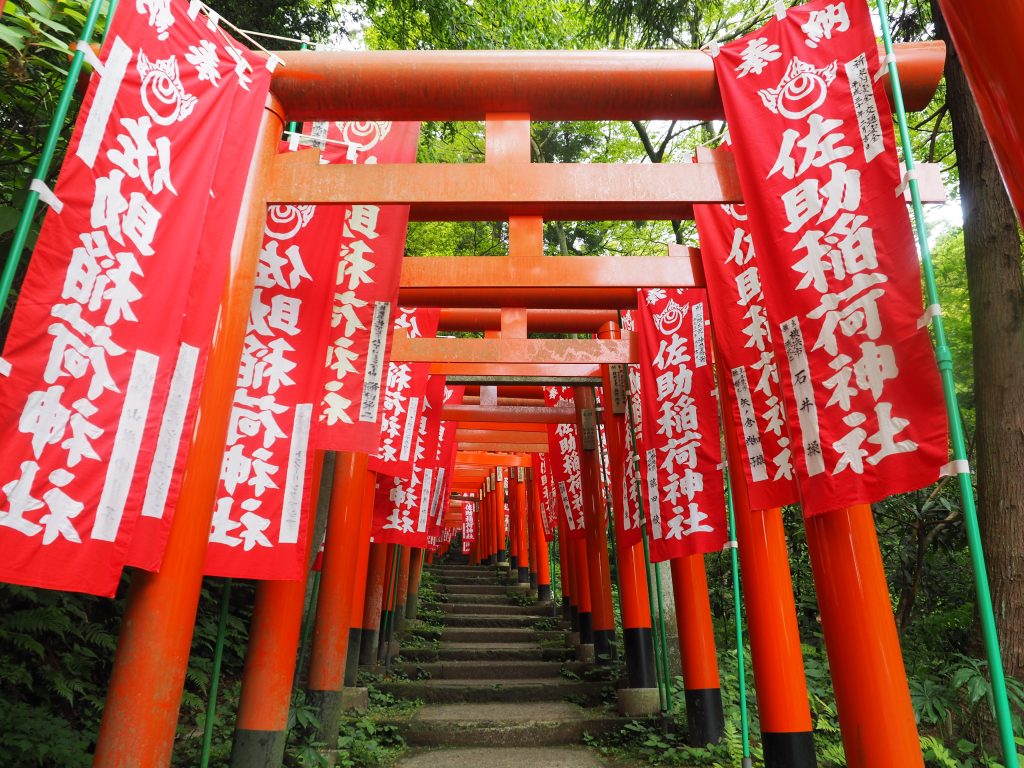There are shrines dedicated to Inari in all of Japan, you come across them in every place. Some are tiny, some are larger, some are just within a bigger temple. But this one, Sasuke Inari Jinja we are about to visit now, is somewhat different. Myriad of little porcelain foxes makes it amazing. Usually the Inari shrine has a pair of foxes. Soon you will see how unbelievably many of them this shrine has.
The history of this shrine is connected with the founder of Kamakura Shogunate and the first shogun Minamoto Yoritomo (1147-1199) whose grave we visited in my article KAMAKURA SHOGUNATE. Yoritomo spent twenty years in exile on the small island of Hirugakojima off Izu, from his age of 14 up to his age of 34. During this time he became ill. He had a dream in which an old man appeared to him who introduced himself as Inari from a hidden village. He urged Yoritomo to rise against the Taira clan. Yoritomo, as we know, went to do this and as a result later he set up the Kamakura shogunate and became the first shogun.
He had this Inari Jinja shrine built on the site of a small shrine which he located in a small hidden village. To name the new shrine Yoritomo took the first character of his childhood name “Sukedono” and combined it is with the character for “help”. Sasuke literally means “helping Yoritomo”. Well, it is true, that old man in Yoritomo´s dream, really helped him.
The symbol connected with Inari is a fox, called kitsune in Japanese. And this Inari shrine has its share of them, as you will see soon.









Because of the foxes we might be tempted to believe that the shrine is dedicated to a fox. In fact it is just a messenger of princess Ugatama, who is the goddess of rice. Princess Ugatama – shinto kami – is enshrined here. It is said that rice grew in her stomach (ina = rice, nari = grow) and that she taught the Japanese how to grow rice. That is why Inari. The very first Inari shrine in Japan was allegedly built as early as in 711 in Fushimi near Kyoto. According to some records there lived two old foxes at Mount Funaoka near Kyoto, one of them was white male and the other was brown female. They made their fox holes next to the Inari Shrine in Fushimi. That is why they became to be considered to be Inari messengers.
Why are there so many Inari shrines in Japan and why are they so important for the Japanese? Rice is the explanation. Rice is the staple food in Japan. In the past, during the times of Feudal Japan, even wages and hereditary salaries were paid in rice, not money. Rice was crucial and so Inari became highly appreciated and she is worshipped until today.

